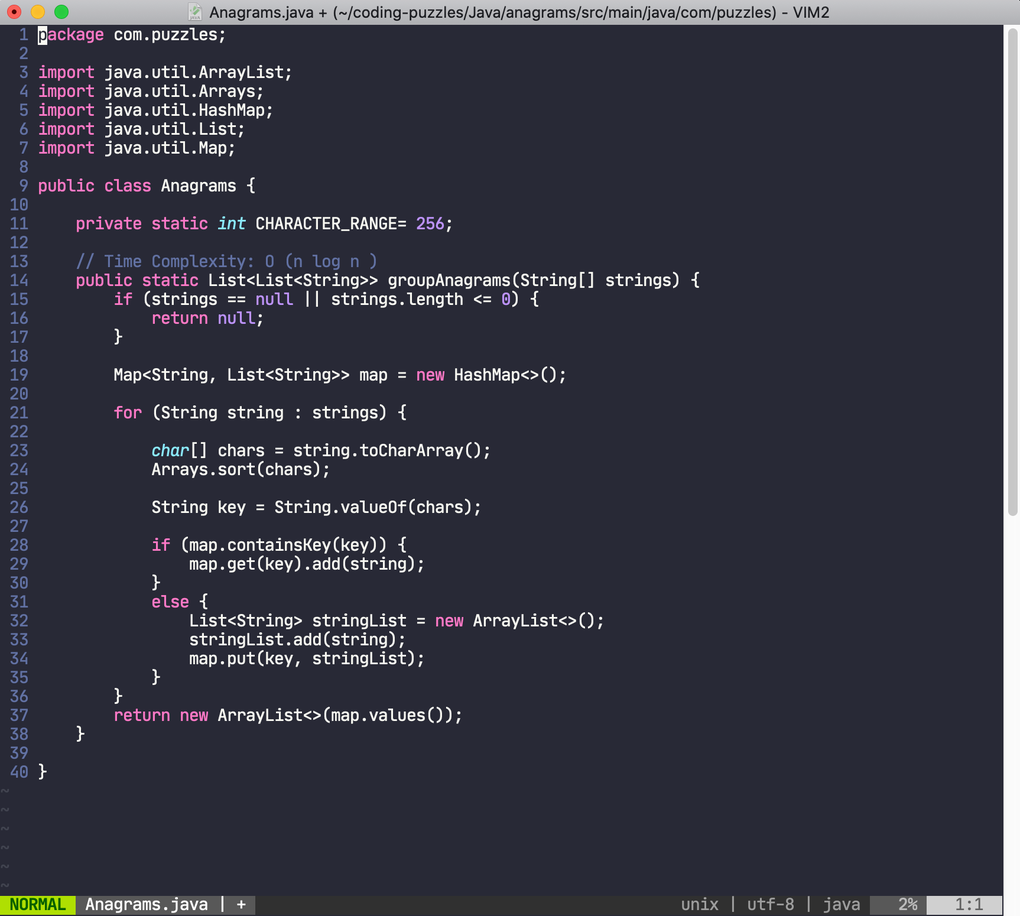
It comes as no surprise that Vim is optimized for this situation and has many ways to efficiently move the cursor where you want it. Motions and Movingĭevelopers spend a lot of time navigating files and positioning the cursor where needed, and not much time typing new code.
#VIM DCOMMANDS HOW TO#
The very first one is motions, also known as how to get your cursor where you want it. In this post we will dive into some subjects that you need to master when working with Vim. You might be interested in reading through my previous post before you continue reading (especially if you are a real beginner): Press capital ZQ ( shift zq) - exit without saving.This is the second post in the vim series. Press capital ZZ ( shift zz) - save & exit You probably have done this already if you are in command mode. useful when multiple files are opened like: vim abc.txt xyz.txt :wq! - same as wq, but force write in case file permissions are readonly Use any of the following combinations in ex mode to exit: You need to be sure that you are in the Command mode. You cannot exit Vim when you are in input mode. In order to exit Vim, you can exit while you are in either the ex mode or in the command mode. In this mode, a : appears at the bottom of the screen. It works per line or based on a range of lines. Input mode - everything that you type, all keystrokes are echoed on the screen.Ĭommand mode or Escape mode - everything that you type in this mode is interpreted as a command.Įx mode - this is another editor, ex. Vim has three modes of operation: Input mode, Command mode & Ex mode. Differences for Vi and Vim are reflected too. I've included more information from Vim reference, SO comments and some other sources. This answer was inspired by the other one, originally authored by and edited by other SO users. Vim has extensive built-in help, type Esc :help Return to open it. Indeed, they are referenced in the Vim documentation. This answer doesn't reference all Vim write and quit commands and arguments.
#VIM DCOMMANDS WINDOWS#
:qa* Quit all windows and Vim, unless there are some buffers which have been changed.This fails when changes have been made in current buffer. Safe-quit (fails if there are unsaved changes): Most commands have abbreviations, with optional part enclosed in brackets: c.Ĭommands marked with '*' are Vim-only (not implemented in Vi). This confirms that you're actually typing a command and not editing the file. Now if you press :, the : will appear at the bottom of the screen. After you enter it, hit the Return to confirm.Įsc finishes the current command and switches Vim to normal mode. The robust method is ESC-:-x-Enter which saves your file and quits.īefore you enter a command, hit the Esc key. If you are unsure, push ESC and that will bring you to command mode. the Escape button, going to COMMAND mode, and then: to go to EX mode. From COMMAND mode, you press colon, :, and a colon will appear at the bottom line, where you can type the above commands.įrom INSERT mode, you need to push ESC, i.e.

it was started with vi file), you need not give it here again.Īt last, the most important: how can you reach EX mode?ĮX mode is for long commands that you can see typing at the bottom line of the screen. If vi already knows the filename to use (e.g.


Vi is a finite state machine with three main states. I draw this to my students each semester and they seem to grasp vi afterwards. Pictures are worth a thousand Unix commands and options:


 0 kommentar(er)
0 kommentar(er)
